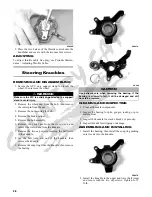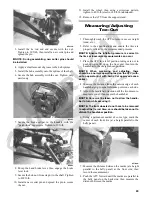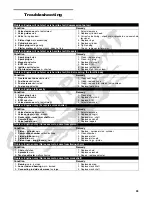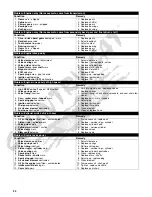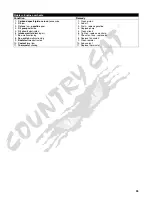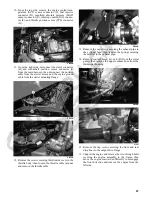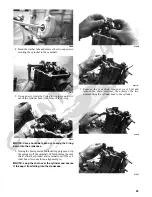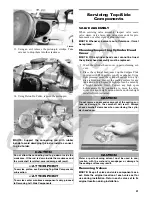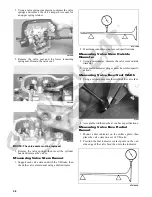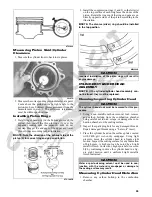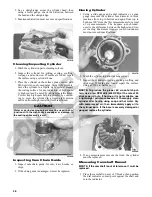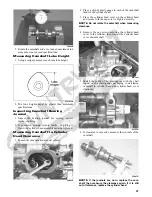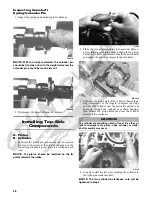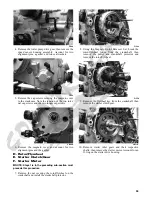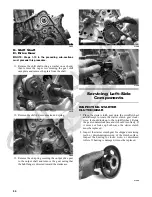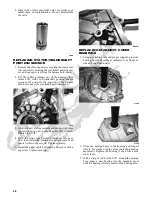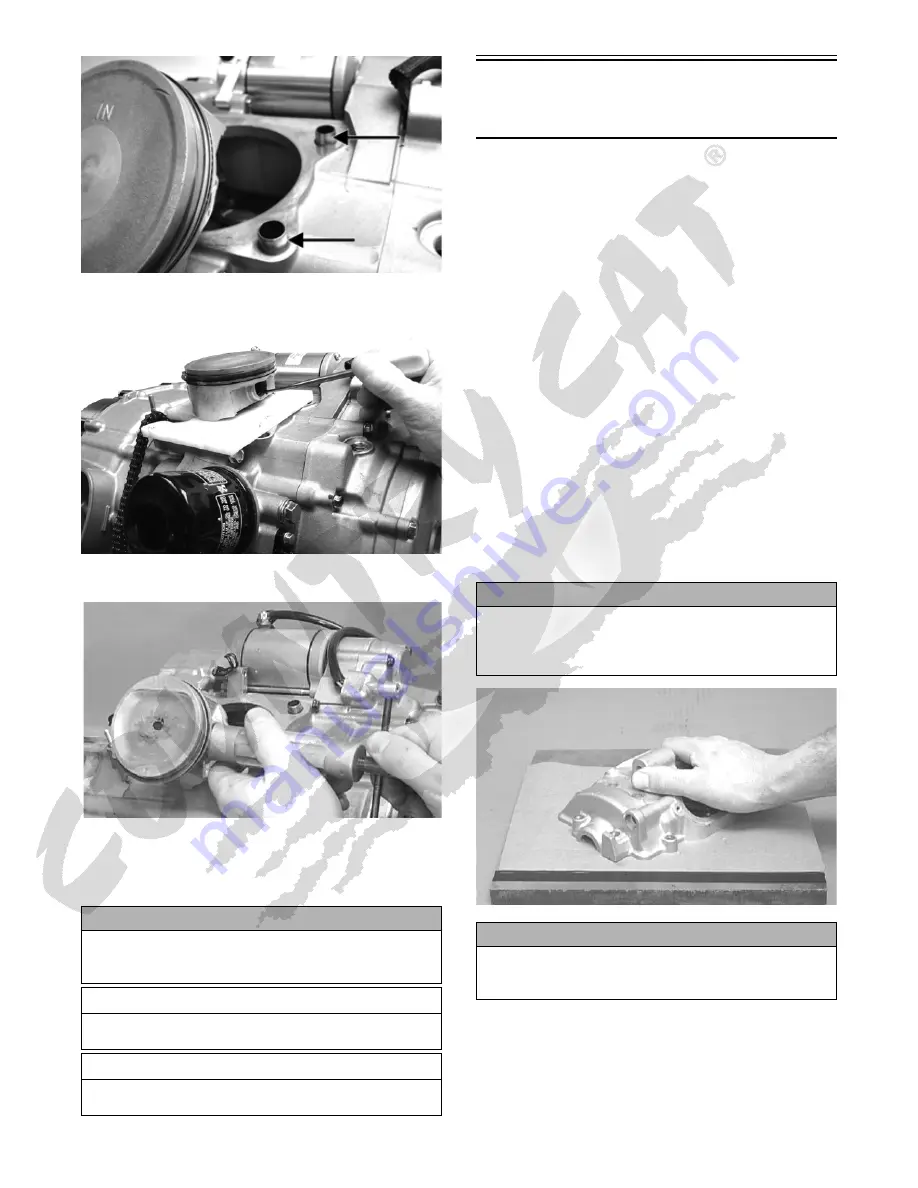
41
FI624A
13. Using an awl, remove the piston-pin circlips. Take
care not to drop them into the crankcase.
FI625
14. Using Piston Pin Puller, remove the piston pin.
MD1219
NOTE: Support the connecting rod with rubber
bands to avoid damaging the rod or install a connect-
ing rod holder.
Servicing Top-Side
Components
VALVE ASSEMBLY
When servicing valve assembly, inspect valve seats,
valve stems, valve faces, and valve stem ends for pits,
burn marks, or other signs of abnormal wear.
NOTE: Whenever a valve is out of tolerance, it must
be replaced.
Cleaning/Inspecting Cylinder Head
Cover
NOTE: If the cylinder head cover cannot be trued,
the cylinder head assembly must be replaced.
1. Wash the cylinder head cover in parts-cleaning sol-
vent.
2. Place the cylinder head cover on the Surface Plate
covered with #400 grit wet-or-dry sandpaper. Using
light pressure, move the cylinder head cover in a fig-
ure eight motion. Inspect the sealing surface for any
indication of high spots. A high spot can be noted by
a bright metallic finish. Correct any high spots
before assembly by continuing to move the valve
cover in a figure eight motion until a uniform bright
metallic finish is attained.
CC130D
Removing Valves
NOTE: Keep all valves and valve components as a
set. Note the original location of each valve set for
use during installation. Return each valve set to its
original location during installation.
CAUTION
Do not allow the connecting rod to go down inside the
crankcase. If the rod is down inside the crankcase and
the crankshaft is rotated, severe damage will result.
AT THIS POINT
To service piston, see Servicing Top-Side Components
sub-section.
AT THIS POINT
To service center crankcase components only, proceed
to Removing Left-Side Components.
CAUTION
Do not remove an excessive amount of the sealing sur-
face or damage to the camshaft will result. Always
check camshaft clearance when resurfacing the cylin-
der head cover.
CAUTION
Water or parts-cleaning solvent must be used in con-
junction with the wet-or-dry sandpaper or damage to
the sealing surface may result.


